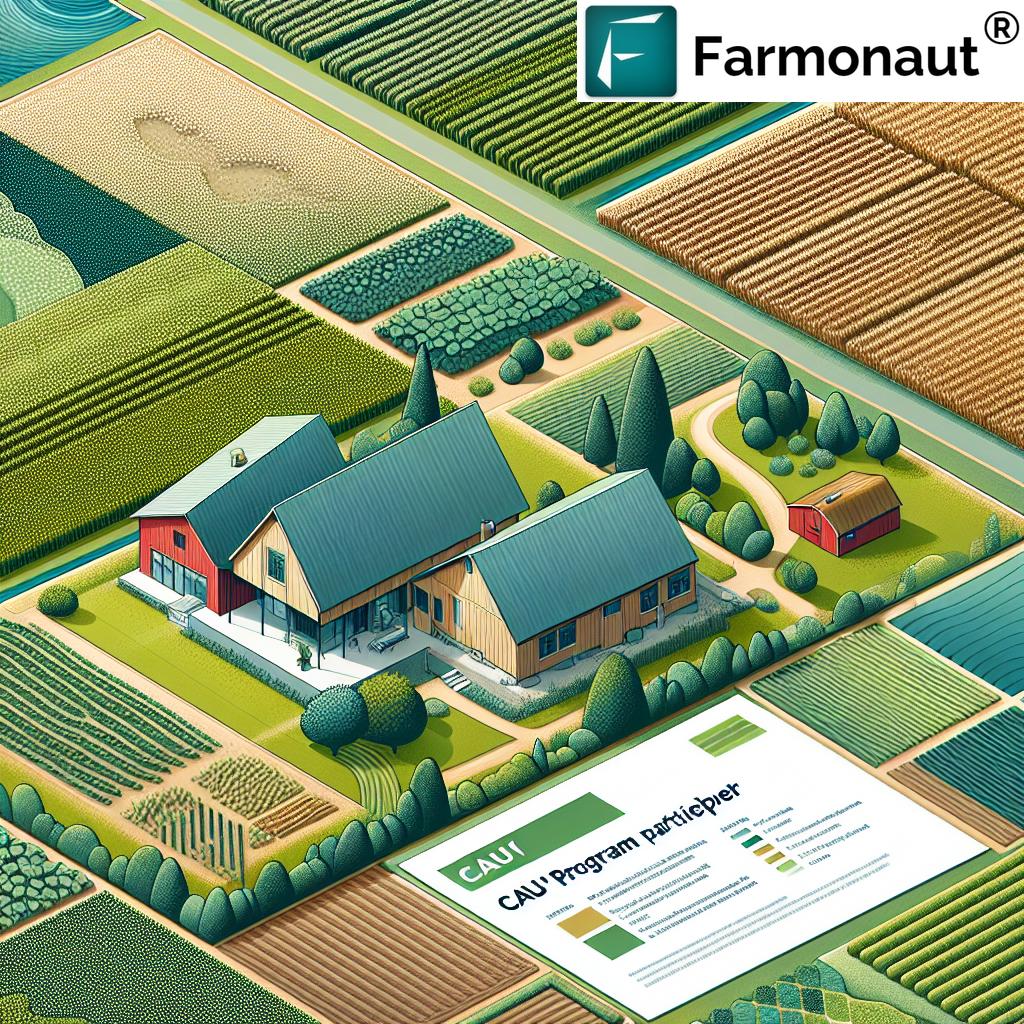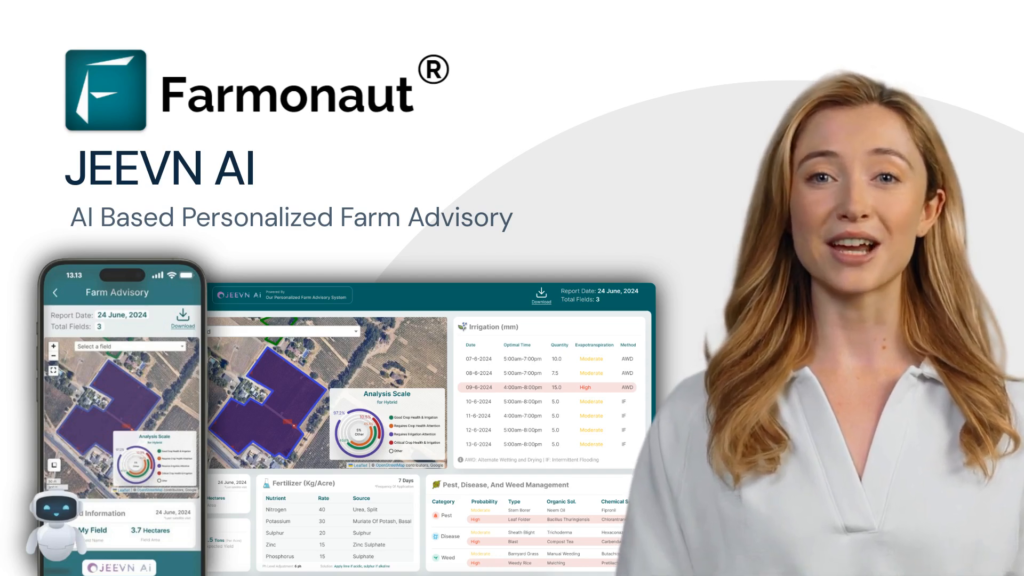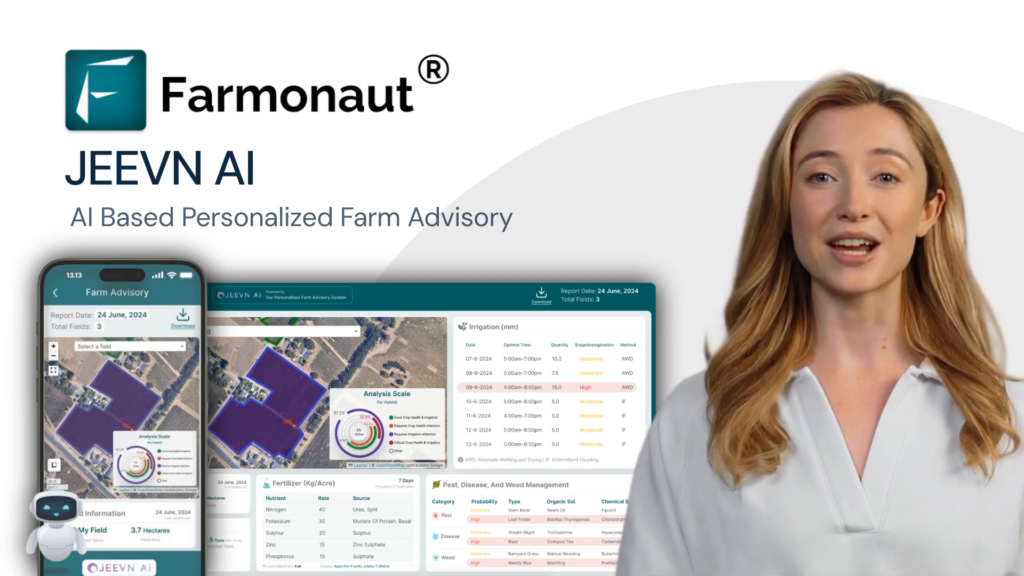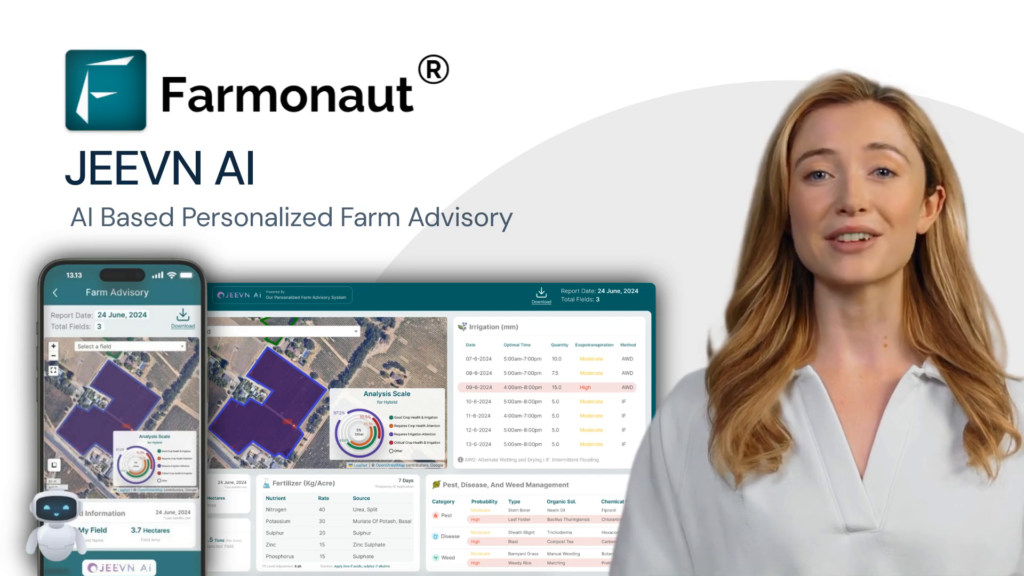Maximize Your Ohio Farm Tax Benefits: Expert Guide to CAUV Program in Mahoning County

“Ohio’s CAUV program requires a minimum of 10 acres and $2,500 annual gross income from agricultural sales for eligibility.“
Welcome to our comprehensive guide on maximizing your Ohio farm tax benefits through the Current Agricultural Usage Valuation (CAUV) program in Mahoning County. As experts in agricultural technology and land management, we at Farmonaut understand the importance of leveraging every available resource to support your farming operations. In this blog post, we’ll delve deep into the intricacies of the CAUV program, offering valuable insights on how you can optimize your tax savings while maintaining your agricultural land classification.
Understanding the CAUV Program in Ohio
The Current Agricultural Usage Valuation (CAUV) program is a state initiative designed to provide significant tax benefits for Ohio farmland owners. Implemented as a state charter amendment in 1973, this program allows agricultural property to be taxed based on its farming value rather than its potential market value for development. This distinction is crucial for landowners in Mahoning County, where the agricultural landscape is evolving, and property values may not always reflect the true agricultural use of the land.
Let’s break down the key aspects of the CAUV program:
- Purpose: To preserve Ohio’s agricultural land by offering tax incentives to farmers and landowners.
- Valuation Method: Bases property taxes on the land’s agricultural value, not its potential development value.
- Eligibility: Open to various agricultural activities beyond traditional crop production.
- Minimum Requirements: Typically 10 acres and $2,500 average annual gross income from agricultural sales.
Qualifying for CAUV in Mahoning County
In Mahoning County, the CAUV program offers a broad definition of agricultural use, encompassing a variety of activities that can help landowners qualify for this valuable tax benefit. Here’s what you need to know:
- Land Requirements: A minimum of 10 acres devoted to agricultural use.
- Income Threshold: An average annual gross income of at least $2,500 from agricultural sales over the three years preceding the application.
- Eligible Activities:
- Field crop cultivation
- Timber production
- Beekeeping (apiculture)
- Animal husbandry and livestock breeding
- Nursery operations
- Ornamental tree cultivation
- Aquaculture
- Fruit and vegetable production
It’s important to note that the definition of agricultural use under the CAUV program is quite inclusive. This broad interpretation allows many landowners to qualify, even if they’re not engaged in traditional large-scale farming operations.
The CAUV Application Process
Applying for CAUV status in Mahoning County involves several steps:
- Initial Application: Submit the application to the Mahoning County Auditor’s Office with a $25 fee.
- Documentation: Provide proof of agricultural income and land use.
- Inspections: The county may conduct site visits to verify agricultural use.
- Annual Renewal: Once approved, you’ll need to renew your CAUV status yearly.
The Mahoning County Auditor’s Office, in collaboration with the Mahoning Soil & Water Conservation District, plays a crucial role in this process. They conduct inspections and soil mapping to assist property owners in the valuation process.
Valuation Process and Soil Types
Understanding how your land is valued under the CAUV program is crucial for maximizing your tax benefits. In Mahoning County, the valuation process is complex and considers various factors:
- Soil Types: The county uses over 101 soil types to determine valuations.
- Crop Yields: Expected productivity of the land influences its value.
- Crop Patterns: Typical crop rotations in the area are considered.
- Crop Prices: Current market prices for agricultural products affect valuation.
- Capitalization Rate: A formula is used to calculate the present value of future income from the land.
It’s worth noting that over 105,600 acres in Mahoning County are currently enrolled in the CAUV program, demonstrating its popularity and effectiveness among local landowners.
Recent CAUV Reforms and Their Impact
The CAUV program has undergone significant reforms in recent years, which have had a substantial impact on farmland assessments and tax calculations. Here are some key changes:
- Conservation Practices: As of June 2017, privately installed conservation measures can only account for 25% of the total CAUV acreage. This change prevents tax penalties related to beneficial conservation practices.
- Soil Rate Increases: Due to inflation and rising crop yields and prices, soil rates saw a significant increase of 128% in 2023 alone.
- Capitalization Rate Adjustments: Changes to the capitalization rate formula have been implemented to better reflect the long-term nature of agricultural investments.
These reforms, advocated for by organizations like the Ohio Farm Bureau, aim to address previous flaws in the program and ensure fair valuation of agricultural land.

Maximizing Your CAUV Benefits
To make the most of the CAUV program in Mahoning County, consider the following strategies:
- Diversify Agricultural Activities: Explore various eligible activities to meet the income requirements.
- Implement Conservation Practices: Utilize conservation measures while being mindful of the 25% acreage limit.
- Keep Accurate Records: Maintain detailed documentation of all agricultural income and expenses.
- Stay Informed: Keep up-to-date with CAUV program changes and local agricultural trends.
- Consult Experts: Work with local agricultural experts and the county auditor’s office for guidance.
“Mahoning County farmland owners can qualify for CAUV benefits through diverse activities like timber, apiculture, and ornamental tree cultivation.“
At Farmonaut, we understand the importance of optimizing your agricultural practices to meet CAUV income requirements. Our satellite-based crop monitoring technology can assist you in making data-driven decisions to improve crop yields and overall farm productivity.
The Role of Technology in Modern Agriculture
In today’s rapidly evolving agricultural landscape, technology plays a crucial role in helping farmers meet the challenges of productivity, sustainability, and compliance with programs like CAUV. At Farmonaut, we offer innovative solutions that can help you optimize your farming practices:
- Satellite-Based Crop Health Monitoring: Our advanced technology provides real-time insights into vegetation health, soil moisture levels, and other critical metrics. This data can help you make informed decisions about irrigation, fertilizer usage, and pest management, potentially increasing your crop yields and agricultural income.
- AI-Powered Advisory System: Our Jeevn AI system delivers personalized farm advice, weather forecasts, and expert crop management strategies. This can help you optimize your agricultural practices and potentially increase your chances of meeting CAUV income requirements.
- Resource Management Tools: Efficient resource management is key to maximizing farm productivity and profitability. Our tools can help you optimize your use of water, fertilizers, and other inputs, potentially reducing costs and increasing your agricultural income.
By leveraging these technologies, you can not only improve your farm’s productivity but also potentially strengthen your position within the CAUV program.
CAUV and Conservation Practices
One of the significant reforms in the CAUV program concerns conservation practices. As stewards of the land, many farmers in Mahoning County are keen to implement environmentally friendly farming methods. Here’s how the CAUV program now addresses conservation:
- 25% Acreage Limit: Privately installed conservation measures can account for up to 25% of your total CAUV acreage without penalizing your tax benefits.
- Eligible Practices: These may include buffer strips, wetland restoration, grass waterways, and other soil and water conservation measures.
- Documentation: It’s crucial to keep detailed records of any conservation practices implemented on your land.
By balancing conservation efforts with productive agricultural use, you can maintain your CAUV status while contributing to environmental sustainability. Farmonaut’s satellite monitoring can help you track the impact of these conservation practices on your overall land health and productivity.
Comparing CAUV Benefits and Requirements
To help you better understand the CAUV program, we’ve compiled a comparison table highlighting key aspects of the program in Mahoning County:
| Criteria | CAUV Requirements | Potential Benefits |
|---|---|---|
| Minimum Acreage | 10 acres | Eligibility for smaller landowners |
| Annual Gross Income | $2,500 average over 3 years | Lower income threshold for qualification |
| Eligible Agricultural Activities | Diverse range including crops, timber, beekeeping, livestock, nurseries, etc. | Flexibility in land use and income sources |
| Tax Calculation Basis | Agricultural value, not market value | Potentially significant tax savings |
| Conservation Practices Impact | Up to 25% of CAUV acreage | Ability to implement conservation without losing benefits |
This table clearly illustrates the balance between the program’s requirements and the potential benefits for Mahoning County landowners. By meeting these criteria, you can significantly reduce your property tax burden while maintaining your agricultural operations.
The Future of CAUV in Mahoning County
As we look to the future, it’s clear that the CAUV program will continue to play a vital role in preserving agricultural land in Mahoning County and across Ohio. Here are some trends and considerations to keep in mind:
- Evolving Agricultural Practices: As farming methods continue to advance, the CAUV program may need to adapt to recognize new forms of agriculture.
- Climate Change Impacts: Changes in weather patterns may affect crop yields and land use, potentially influencing CAUV valuations.
- Technological Integration: The use of satellite imagery and AI in agriculture may become more prevalent in assessing land use and productivity.
- Urban Expansion: As cities grow, the pressure on agricultural land may increase, making programs like CAUV even more crucial.
At Farmonaut, we’re committed to helping farmers navigate these changes. Our satellite-based monitoring and AI-powered advisory systems can provide valuable insights to help you adapt to changing conditions while maintaining your CAUV eligibility.
How Farmonaut Can Support Your CAUV Eligibility
While Farmonaut is not directly involved in the CAUV program administration, our technology can be a valuable tool in helping you maintain and optimize your agricultural operations, which in turn can support your CAUV eligibility:
- Crop Health Monitoring: Our satellite-based monitoring can help you identify issues early, potentially improving crop yields and increasing your agricultural income.
- Resource Optimization: By providing insights on soil moisture and crop health, we can help you optimize your use of water and fertilizers, potentially reducing costs and increasing profitability.
- Diversification Support: Our platform can assist in monitoring various types of agricultural activities, supporting your efforts to diversify and meet CAUV income requirements.
- Data-Driven Decision Making: With access to real-time data and AI-powered insights, you can make more informed decisions about your agricultural practices.
By leveraging these tools, you can potentially improve your farm’s productivity and profitability, which may help you meet and maintain the income requirements for CAUV eligibility.
Frequently Asked Questions
To help address common queries about the CAUV program in Mahoning County, we’ve compiled a list of frequently asked questions:
- Q: Can I qualify for CAUV if I only have 5 acres of land?
A: While the general requirement is 10 acres, there are exceptions. If your land has been in agricultural production for the last three years and has generated an average gross income of at least $2,500, you may still qualify. - Q: How often do I need to renew my CAUV status?
A: CAUV status must be renewed annually. The Mahoning County Auditor’s Office will send you a renewal form each year. - Q: What happens if my agricultural income falls below $2,500 in a given year?
A: The income requirement is based on a three-year average. If you fall below in one year but maintain an average of $2,500 over three years, you may still qualify. - Q: Can I include income from selling firewood in my CAUV application?
A: Yes, income from timber production, including firewood sales, can be included in your agricultural income for CAUV purposes. - Q: How does the CAUV program handle land used for conservation purposes?
A: Up to 25% of your CAUV acreage can be dedicated to conservation practices without penalty. This allows for a balance between productive use and environmental stewardship.
Conclusion: Maximizing Your CAUV Benefits in Mahoning County
The Current Agricultural Usage Valuation (CAUV) program offers significant tax benefits for farmland owners in Mahoning County, Ohio. By understanding the program’s requirements, staying informed about recent reforms, and leveraging modern agricultural technologies, you can maximize these benefits while maintaining your land’s agricultural classification.
Remember these key points:
- Qualify with diverse agricultural activities beyond traditional crop production.
- Meet the minimum requirements of 10 acres and $2,500 average annual gross income.
- Stay informed about CAUV reforms and their impact on soil valuations and farmland assessments.
- Implement conservation practices within the allowed 25% of your CAUV acreage.
- Utilize technology like Farmonaut’s satellite-based crop monitoring to optimize your agricultural practices.
By following these guidelines and staying proactive in your farm management, you can ensure that you’re making the most of the CAUV program in Mahoning County. This not only benefits your bottom line but also contributes to the preservation of Ohio’s vital agricultural heritage.
For more information on how Farmonaut’s advanced agricultural technology can support your farming operations and potentially help you meet CAUV requirements, visit our website or download our mobile app today.
Explore Farmonaut API
API Developer Docs
Earn With Farmonaut
Earn 20% recurring commission with Farmonaut’s affiliate program by sharing your promo code and helping farmers save 10%. Onboard 10 Elite farmers monthly to earn a minimum of $148,000 annually—start now and grow your income!
Learn More About Our Affiliate Program
Farmonaut Subscriptions
By staying informed, leveraging technology, and making strategic decisions about your land use, you can maximize the benefits of the CAUV program in Mahoning County. Remember, Farmonaut is here to support your agricultural success with our cutting-edge satellite monitoring and AI-powered advisory services. Together, we can ensure the continued prosperity of Ohio’s agricultural sector.
















